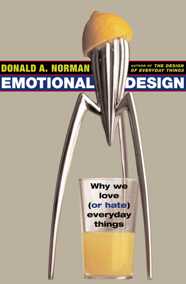“Our theories tell us stories about the objects of our lives. As we begin to live with objects that challenge the boundaries between the born and the created and between humans and everything else, we will need to tell ourselves different stories. . .”
TC Record articles only stay freely accessible for a week or so. Up for now is a book review by Paul Duncum, of the new “Evocative Objects: Things We Think With” edited by Sherry Turkle.
Combining thought with feeling, Turkle argues that we think with the objects we love and love the objects with which we think.
She and her authors variously show the value of objects as “active life presences”, how they are able to act as catalysts for self-creation, how they connect the intellect with the gut, and how we often feel at one with objects. People, including adults, even talk to soft toys as if they were persons.
. . . everyone will be delighted by her and her authors’ many striking and often poignant examples. . . Favorites of mine include slime mold as a way to think about dynamic systems, the suitcase that evoked the author’s relationship with her grandmother, the healing power of a cookie, and how a brooch can evoke a complex, family narrative going back generations that involved the Nazis and Jews, the immigrant experience, and unresolved mother and daughter relations.
This put me in mind of a book I’ve raved about and brought into wildly divergent discussions before, called “Emotional Design: why we love or hate everyday things” in which computer science and psychology professor Donald A. Norman details for us why and how we experience objects emotionally, for good or ill. (Usually without realizing or acknowledging we do it, much less actually thinking about it.)
From Booklist by Gilbert Taylor:
. . . Norman’s analysis of people’s emotional reactions to material objects is a delightful process, replete with surprises for readers who have rarely paused to consider why they like or loathe their belongings. He breaks down emotional reactions into three parts. . . asserting that “a successful design has to excel at all levels.”
. . . With household robots on the horizon, Norman implores designers to redeem their mistakes in designing personal computers. His readers will take away insights galore about why shoppers say, “I want that.”




About the Author
* Paul Duncum
School of Art and Design, University of Illinois at Urbana-Champaign
PAUL DUNCUM is Professor of Art Education, and Chair of the Art Education Division, School of Art and Design, University of Illinois at Urbana-Champaign.
He has published widely in art education on images of childhood, children’s unsolicited drawing, globalization, and popular visual culture. Drawing upon Cultural Studies, he is a leading advocate of the visual culture paradigm within art education. He is co-editor of “On Knowing: Art and Visual Culture” published by Canterbury University Press, and editor of “Visual Culture in the Art Class: Case Studies” published by the National Art Education Association.
Cool! This is the first of a nonfiction power of story trilogy!
Sherry Turkle is Abby Rockefeller Mauzé Professor of the Social Studies of Science and Technology in the Program in Science, Technology, and Society at MIT and the founder (2001) and current director of the MIT Initiative on Technology and Self, a center of research and reflection on the evolving connections between people and artifacts.
Professor Turkle received a joint doctorate in sociology and personality psychology from Harvard University and is a licensed clinical psychologist.
Professor Turkle is the author of Psychoanalytic Politics: Jacques Lacan and Freud’s French Revolution (Basic Books, 1978; MIT Press paper, 1981; second revised edition, Guilford Press, 1992); The Second Self: Computers and the Human Spirit (Simon and Schuster, 1984; Touchstone paper, 1985; second revised edition, MIT Press, 2005); and Life on the Screen: Identity in the Age of the Internet (Simon and Schuster, November 1995; Touchstone paper, 1997).
Seminars at the Initiative on Technology and Self led to three edited collections, all to be published by the MIT Press, on the relationships between things and thinking.
The first volume, Evocative Objects: Things We Think With, was published in Fall 2007. The second volume, Falling For Science: Objects in Mind, will appear in Spring 2008. The third volume, The Inner History of Devices, will follow in Fall 2008. Professor Turkle is currently completing a book on robots and the human spirit based on the Initiative’s 10-year research program on relational artifacts.
Professor Turkle has written numerous articles on psychoanalysis and culture and on the “subjective side” of people’s relationships with technology, especially computers. She is engaged in active study of robots, digital pets, and simulated creatures, particularly those designed for children and the elderly as well as in a study of mobile cellular technologies.
Profiles of Professor Turkle have appeared in such publications as The New York Times, Scientific American, and Wired Magazine. She is a featured media commentator on the effects of technology for CNN, NBC, ABC, and NPR, including appearances on such programs as Nightline and 20/20.
Something I read about her said she is a self-proclaimed “bricoleur.”
Bricolage sounds for all the world just like UNSCHOOLING! Hurray!
Wikipedia puts Bricolage in education this way:
“. . . Seymour Papert discusses two styles of solving problems. Contrary to the analytical style of solving problems, he describes bricolage as a way to learn and solve problems by trying, testing, playing around.”
[…] Don Norman’s wonderful essay, “Being Analog”, provides a great background for all this. [And I LOVE Norman’s book, Emotional Design which I blogged here.] […]